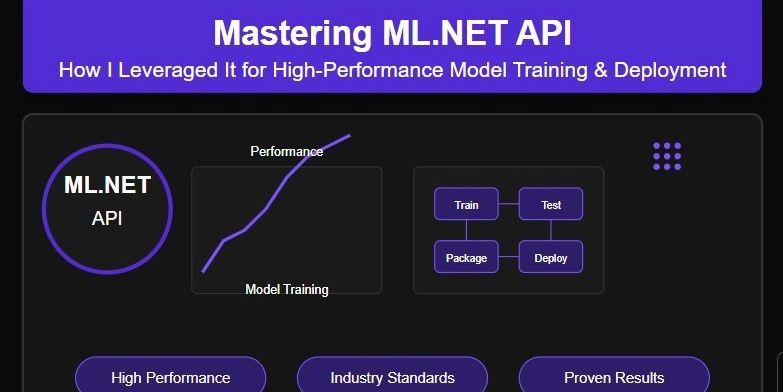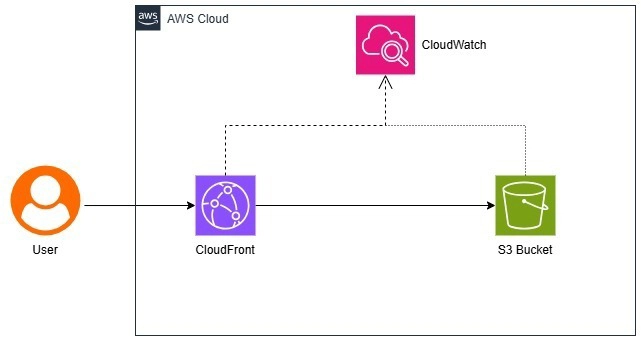Mastering ML.net API: How I Leveraged It for High-Performance Model Training & Deployment
In my last post, I shared how AutoML outperformed my manually implemented ML.NET model in prediction accuracy. But instead of stopping there, I dug deeper. What if you could achieve even better results while maintaining full control over your model? That’s exactly what I did. Instead of relying solely on AutoML, I used its insights to train and optimize a high-performance model using ML.NET API and then deployed it as an API for real-world use. Why ML.NET API Still Gives You an Edge Over AutoML While AutoML is great for quickly generating models, the ML.NET API SDK gives you the ability to: Customize feature engineering – Tailor data transformations for better predictions. Manually fine-tune hyperparameters – Go beyond AutoML’s automatic adjustments for deeper optimization. Select the right model evaluation metrics – Focus on performance measures that align with real business needs. Deploy models as APIs for real-time predictions – Making ML solutions practical for enterprise applications. I applied these principles while working on a healthcare ML solution for accurate drug quantity dispensation for HMOs. Instead of letting AutoML handle everything, I used its insights to strategically fine-tune my ML.NET API implementation—and the difference was huge. From Model Training to Deployment: The Real-World Impact. Rather than stopping at model optimization, I exposed the ML.NET model as an API to integrate it into a larger system. This enabled: Real-time predictive analytics – Ensuring optimal drug dispensation for patients. Scalability and flexibility – The ML model can be updated and improved without disrupting the system. Enterprise-ready AI – A structured ML deployment pipeline that integrates seamlessly with healthcare applications. Key Takeaways for ML Engineers & Developers AutoML is a great starting point, but understanding ML.NET API lets you optimize beyond its defaults. Fine-tuning ML models manually gives you control over performance, accuracy, and scalability. Deploying ML models as APIs makes AI practical and production-ready for enterprise applications. As I continue my ML.NET journey, I’m excited about how machine learning can drive innovation across industries. If you're passionate about ML.NET, AI in production, or deploying scalable ML models, let’s connect! Follow for more insights on ML.NET, AI, and .NET development.

In my last post, I shared how AutoML outperformed my manually implemented ML.NET model in prediction accuracy. But instead of stopping there, I dug deeper.
What if you could achieve even better results while maintaining full control over your model?
That’s exactly what I did. Instead of relying solely on AutoML, I used its insights to train and optimize a high-performance model using ML.NET API and then deployed it as an API for real-world use.
Why ML.NET API Still Gives You an Edge Over AutoML
While AutoML is great for quickly generating models, the ML.NET API SDK gives you the ability to:
Customize feature engineering – Tailor data transformations for better predictions.
Manually fine-tune hyperparameters – Go beyond AutoML’s automatic adjustments for deeper optimization.
Select the right model evaluation metrics – Focus on performance measures that align with real business needs.
Deploy models as APIs for real-time predictions – Making ML solutions practical for enterprise applications.
I applied these principles while working on a healthcare ML solution for accurate drug quantity dispensation for HMOs. Instead of letting AutoML handle everything, I used its insights to strategically fine-tune my ML.NET API implementation—and the difference was huge.
From Model Training to Deployment: The Real-World Impact.
Rather than stopping at model optimization, I exposed the ML.NET model as an API to integrate it into a larger system. This enabled:
Real-time predictive analytics – Ensuring optimal drug dispensation for patients.
Scalability and flexibility – The ML model can be updated and improved without disrupting the system.
Enterprise-ready AI – A structured ML deployment pipeline that integrates seamlessly with healthcare applications.
Key Takeaways for ML Engineers & Developers
AutoML is a great starting point, but understanding ML.NET API lets you optimize beyond its defaults.
Fine-tuning ML models manually gives you control over performance, accuracy, and scalability.
Deploying ML models as APIs makes AI practical and production-ready for enterprise applications.
As I continue my ML.NET journey, I’m excited about how machine learning can drive innovation across industries. If you're passionate about ML.NET, AI in production, or deploying scalable ML models, let’s connect!
Follow for more insights on ML.NET, AI, and .NET development.









































































































































































![[The AI Show Episode 142]: ChatGPT’s New Image Generator, Studio Ghibli Craze and Backlash, Gemini 2.5, OpenAI Academy, 4o Updates, Vibe Marketing & xAI Acquires X](https://www.marketingaiinstitute.com/hubfs/ep%20142%20cover.png)


























































































































![[FREE EBOOKS] The Kubernetes Bible, The Ultimate Linux Shell Scripting Guide & Four More Best Selling Titles](https://www.javacodegeeks.com/wp-content/uploads/2012/12/jcg-logo.jpg)



![From drop-out to software architect with Jason Lengstorf [Podcast #167]](https://cdn.hashnode.com/res/hashnode/image/upload/v1743796461357/f3d19cd7-e6f5-4d7c-8bfc-eb974bc8da68.png?#)







































































































.png?#)




.jpg?#)


















 (1).webp?#)













_Christophe_Coat_Alamy.jpg?#)







































































































![Rapidus in Talks With Apple as It Accelerates Toward 2nm Chip Production [Report]](https://www.iclarified.com/images/news/96937/96937/96937-640.jpg)









































































































































